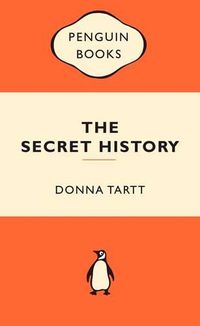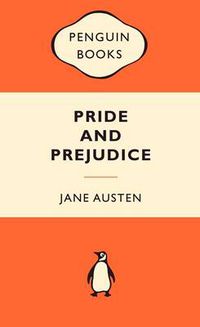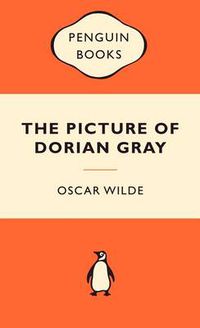With the upcoming announcement of this year’s winner, our Children’s Prize shortlist authors talk about their inspiration, their perfect reader, their favourite writing advice and what they hope readers take away from their books.
Want to know more about each shortlisted title? Explore the shortlist here.
What was the initial inspiration for this story?
Shirley Marr (A Glasshouse of Stars): My immigration to Australia with my family when I was seven years old has always been a defining event of my life. So, it’s always been a passion project to tell my story in a way that best elicits the feelings of cultural shock and the struggle to adapt to a completely new environment, language and way of life. I wanted to tell my story in essence, but to make it universal, open and also a safe magical place in which to explore a sometimes-fraught topic.
Charlie Archbold (The Sugarcane Kids and the Red-bottomed Boat): The inspiration for this story came from a family holiday I took in far north Queensland years ago. I was on a mangrove tour and the guide told us crocodiles love the colour red. I loved that idea and knew one day it would become a story. I didn’t write it for years, but I think writers pick up these little seeds of inspiration and store them away until creative conditions are right. I also feel very connected to this part of the world. I spent time living and working in the region as a backpacker so the environment, the dangers, the beauty, are familiar and special to me.
Peter Carnavas (My Brother Ben): I had wanted to write a story about brothers for a long time. There are such rich themes to explore in brotherhood and I wanted to dive into all the things that hold siblings together, the humour, the adventure and the tension. The main thing I wanted to capture was that feeling of being a little brother, the sense of being a kid and looking up to the bigger, better version of yourself. Then, of course, there are the other ingredients I wanted to wedge into a story: a love of birds and the setting of Cabbage Tree Creek, where my mum grew up.
What is the best writing advice you’ve ever received?
Anna Zobel (Little Gem): I learnt a lot about writing when I was studying teaching. My passion for writing was reignited, actually, when my literacy professor asked our class, ‘who here is a writer?’ So the first step is to admit that you’re a writer. The next best advice, which comes from the Writer’s Workshop sequence we teach in Victorian schools and also from George Saunders’ book A Swim in a Pond in the Rain, is that you should read what you enjoy, and write to delight yourself as a reader; that you very likely already have an intuitive writing style that is unique to you, and if you write enough you’ll be able to figure out what that style is, unpack it a bit, and improve upon it; and that writing is endless editing. I’m only just beginning to understand myself as a writer and this advice has really helped me.
Jason Pamment (Treasure in the Lake): It’s not advice given directly to me, but from an interview with John Swartzwelder, a legendary television writer who wrote many of the best Simpsons episodes. He discussed his writing process, where he essentially scrambles to write an entire episode in a day, full of pattern dialogue and terrible jokes. With the hard part done, writing a complete story from beginning to end, he can then move on to the slightly easier and funner job of ‘fixing it’. It’s an approach I love, because it’s much easier to make important, sweeping changes to elements of your story when they aren’t already polished and pretty.
Who is the perfect reader for your book?
Peter Carnavas: To me, it’s a book for families. All of my work tends to revolve around family in some way, and I’d love for children to share this book with their parents. Children’s books have that wonderful capacity to appeal to any age on different levels, so, basically everyone is the perfect reader for my book.
Richard Pritchard (Wylah the Koorie Warrior): The perfect reader is aged 8+, loves animals, loves action, fantasy adventure and has a strong sense of justice.
Shirley Marr: Having had wonderful readers of all ages come up to me wanting to discuss their stories and my book’s impact on them, I have realised that A Glasshouse of Stars is not just for those who are migrants themselves, but anyone who is feeling displaced, unsure of their place in the world or even momentarily lost in their life. At its heart, this is a story about discovering where you fit in.
What do you hope readers take away from your book?
Richard Pritchard: I would love for readers to gain a desire to connect with aboriginal culture in their local area, that would be amazing. We can see this already happening and its incredible.
Jordan Gould (Wylah the Koorie Warrior): We hope that readers will take away a new pair of eyes on Aboriginal culture. We really wish to inspire others to go out to their local tribes and elders and learn more about the culture that's in their community.
Charlie Archbold: When I wrote this book, I wanted it to have a sense of childhood freedom. Bikes, fresh air, getting through a school day so you can play outside. I want middle grade readers to have fun and adventure as they travel through the story with Andy and Eli. I hope my readers take away warm feelings of loyalty and friendship and the importance of family and community in all its shapes and sizes. There is also a keen sense of seeking justice embedded in the story. I hope my readers recognise that acting can be effective and that it is important to stand up for what you believe in.
Can you tell us about the creative process?
Anna Zobel: The book began as an illustration. I kept drawing the same witch character again and again in my sketchbook, and eventually I was compelled to sit down and figure out who she was. Her name came to me immediately, as did some of her character traits—I knew Little Gem loved to help, and that she cared very deeply about her friends. Before I wrote the books, I made two zines about her. These zines were called 'How to be Magic' and 'Grandma Lost', and they had no words. I realised eventually that Little Gem’s story was too big to be contained in a 16-page comic. Zoe and Mary, my editor/publisher team at Penguin Random House, helped me figure out that Little Gem would be the perfect character for a first chapter book.
Jason Pamment: I started scribbling notes and sketches for Treasure in the Lake back in 2011. Some of the earliest material was drawn in a sketchbook while on a five month trip in South America, where I was lucky enough to visit early Incan ruins and epic landscapes. This was definitely a big inspiration! I drew rough character designs and ideas for environments. When I arrived home, my early attempts at the book were just terrible! I didn’t really know how to construct a larger story and I was also new to making comics. They’re very different to animation, which was what I was used to. I just started drawing from page one and tried to make it up on the fly. I didn’t even know how it would end! When I’d finished it didn’t make much sense. So I revised it, and revised it and revised it again. These days I use extensive outlines to broadly plan a story.





